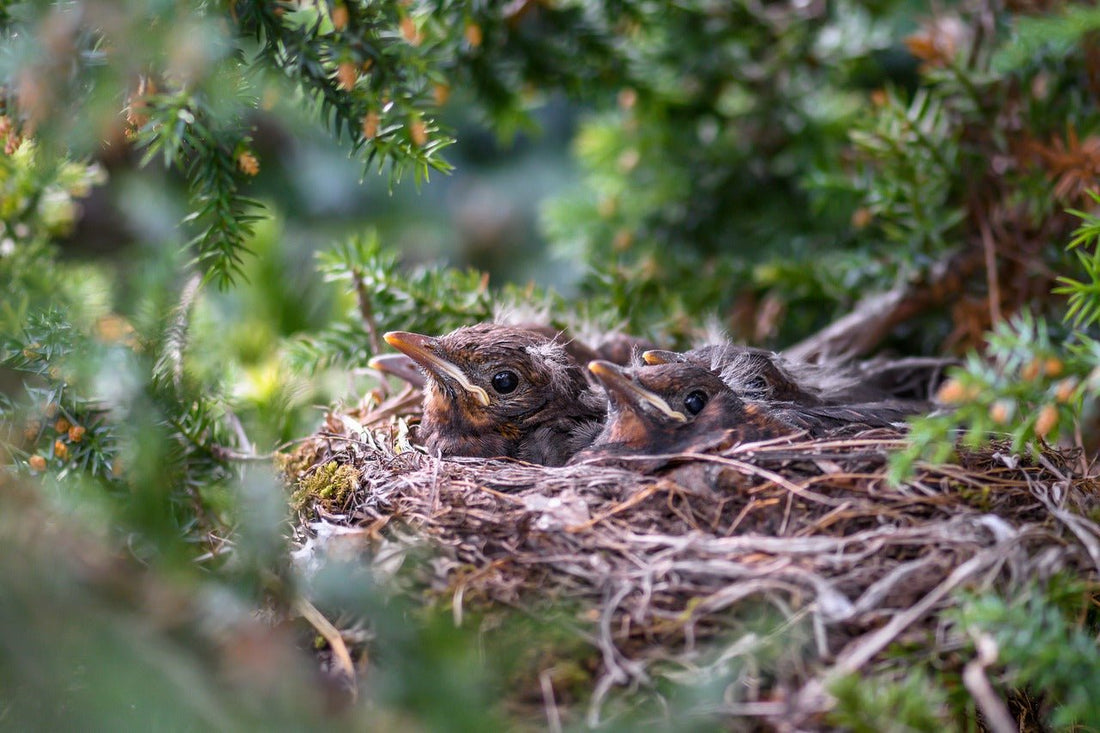
Backyard Birdwatching: How to Locate and Observe Nesting Birds at Home
Share
Introduction
Imagine waking up to the cheerful chirping of birds outside your window, only to realize they’re building a nest right in your backyard! Birdwatching isn’t just for forests and wildlife refuges—it can happen right at home, and watching birds raise their young is one of the most rewarding parts of the hobby.
Backyard birders play a huge role in supporting local bird populations by creating safe spaces, offering food and shelter, and observing without disturbing. If you’ve ever been curious about the nesting habits of birds in your neighborhood, this guide will walk you through how to find, observe, and even help nesting birds—all while being a responsible and ethical birdwatcher.
Making Your Backyard a Bird Nesting Haven
Why Do Birds Nest in Backyards?
Your yard is like prime real estate for many birds. It offers food, shelter, and—if you set it up right—a safe place to raise their young. Birds are drawn to areas with trees, shrubs, and quiet corners where they can safely build their nests.
How to Attract Nesting Birds
Want to increase your chances of spotting a nest? Make your yard more inviting with these simple changes:
✅ Plant native trees and shrubs – Birds naturally seek shelter in familiar plants.
✅ Keep dead trees (if safe) – Woodpeckers, owls, and chickadees love nesting in old tree cavities.
✅ Create brush piles – Small birds like wrens and sparrows appreciate the extra cover.
Adding Nest Boxes and Birdhouses
Not all birds build nests in trees—some prefer cozy birdhouses! Installing nest boxes can encourage species like bluebirds, wrens, and chickadees to move in. Just remember:
✔ Pick the right size and entrance hole for the birds you want to attract.
✔ Mount the box at the correct height to protect from predators.
✔ Clean it out between seasons to keep it safe for future residents.
Offering Nesting Materials
Birds work hard to build their nests, and you can give them a little help by providing materials like:
🪵 Twigs and dry grass for structure
🐶 Pet fur (chemical-free) for warmth
🌿 Small leaves and moss for soft lining
Hang these materials in a mesh bag or scatter them in your yard, and watch the birds take them!
How to Spot Nesting Birds Without Disturbing Them
Look for These Signs of Nesting
If you notice birds acting a little differently, they might be nesting nearby. Keep an eye out for:
👀 Birds carrying twigs, grass, or feathers in their beaks
🕊 Frequent visits to the same hidden spot
🎶 Louder chirping or territorial behavior
Where Do Birds Nest in Backyards?
Every bird has a preference! Some common nesting spots include:
-
Trees & shrubs – Robins, cardinals, and sparrows love these.
-
Eaves & porches – Barn swallows and phoebes often set up shop here.
-
Hanging baskets & decorations – Mourning doves are notorious for this!
-
Birdhouses & tree cavities – Perfect for bluebirds, wrens, and chickadees.
Using Binoculars & Apps to Identify Birds
Want to know exactly what bird is nesting in your yard? A pair of binoculars and an app like Merlin Bird ID or eBird can help you identify species and understand their nesting habits.
Common Backyard Nesting Birds
1. American Robin
Famous for their bright red chest, robins love nesting in trees, gutters, and even ledges.
2. Eastern Bluebird
These colorful birds prefer nest boxes and tree cavities.
3. House Wren
Tiny but mighty, wrens fill birdhouses with sticks to claim their territory.
4. Northern Cardinal
Known for their striking red feathers, cardinals build nests in dense shrubs.
5. Mourning Dove
These gentle birds create loose, fragile nests on ledges, porch lights, and even flower pots.
The Do’s and Don’ts of Ethical Nest Watching
✅ DO:
✔ Observe from a distance using binoculars.
✔ Keep pets away from nesting areas.
✔ Limit visits—too much attention can stress the birds.
❌ DON’T:
❌ Touch or move nests—this can cause abandonment.
❌ Post nest locations online—it can attract unwanted attention.
❌ Use flash photography—it can startle birds or attract predators.
Documenting Your Backyard Birdwatching Experience
Keep a Bird Journal
Jot down dates, species, and interesting nesting behaviors. Over time, you’ll notice patterns in bird activity!
Photography Tips for Nesting Birds
📸 Use a zoom lens to avoid getting too close.
📸 Stay hidden to keep the birds comfortable.
📸 Avoid flash—natural light is best!
Contribute to Citizen Science Projects
Want to make your observations count? Report your sightings to programs like:
-
NestWatch – Helps scientists track nesting success.
-
eBird – Logs bird sightings for conservation.
-
The Great Backyard Bird Count – A fun, nationwide event every year!
Conclusion
Backyard birdwatching is one of the most rewarding ways to connect with nature. By creating a welcoming space, observing responsibly, and contributing to citizen science, you’re not just enjoying a fun hobby—you’re helping birds thrive!
So grab your binoculars, set up a comfy chair, and get ready to witness one of nature’s most amazing moments: birds raising their young, right in your own backyard. Happy birdwatching! 🐦🌿
